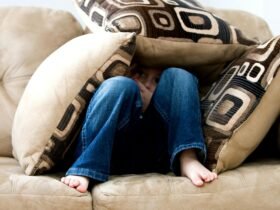Last Updated on October 29, 2024 by Daniele Lima
We live in a digital age, in which connectivity is incessant and often uninterrupted. From mobile devices to portable computers, we are immersed in a technological universe that keeps us interconnected to work, social networks, and news updates, 24/7. Although this connectivity has advantages, it can also negatively impact our mental health.
Therefore, there is a need for a digital detox, a practice that involves reducing or temporarily eliminating the use of electronic devices, aiming to improve well-being and emotional balance.
Let’s investigate how digital detox can optimize your mental health, contributing to reducing stress and recovering concentration, by balancing your time between online and offline activities.
Table of Contents
Digital Detox Guide: Definition and Core Benefits
Digital detox consists of a deliberate period of time away from screens and devices connected to the internet, such as smartphones, computers, and tablets. The objective is to provide relief to the mind, enabling your recovery in the face of the incessant bombardment of information, notifications, and distractions. Practice can be customized to individual needs, ranging from just a few hours offline to periods of days or weeks without the use of devices.
Screen Time Effects: Why Digital Detox Matters

Technology has provided countless advantages in our existence, however, the excessive use of electronic devices can negatively affect mental health. Studies suggest that prolonged exposure to screens is associated with several health problems, such as:
Stress and anxiety: Incessant connectivity, particularly with social media, can be a factor that aggravates stress and anxiety. The constant need to stay updated, coupled with exposure to adverse news, can intensify psychological pressure.
Sleep disorders: The use of electronic devices before bed, in particular exposure to blue light, can compromise sleep quality, leading to insomnia or fragmented sleep.
Lack of focus: The practice of digital multitasking and the incessant switching between applications and social networks compromise concentration and the ability to stay focused on meaningful activities.
Social comparisons: On digital platforms, it is common for individuals to predominantly share the most favorable aspects of their existence, which can incite feelings of inadequacy and low self-esteem in other users, culminating in negative repercussions on mental health.
| Effect of Screen Time | Impact on Health | Potential Benefits of Digital Detox |
|---|---|---|
| Stress and Anxiety | Constant connectivity and exposure to social media can amplify stress and anxiety, especially with frequent exposure to negative news. | Lower stress and improved mental clarity by reducing time on social media and engaging in calming offline activities. |
| Sleep Disorders | Blue light exposure from screens before bed disrupts sleep quality, leading to insomnia or fragmented sleep patterns. | Improved sleep quality by reducing screen exposure before bed and following a relaxing bedtime routine. |
| Lack of Focus | Frequent app-switching and multitasking can hinder focus and diminish the ability to concentrate on important tasks. | Enhanced focus and productivity by setting boundaries around screen time and focusing on single-task activities. |
| Social Comparisons | Exposure to idealized portrayals of others’ lives on social media can lower self-esteem and lead to feelings of inadequacy. | Improved self-esteem by focusing on real-life relationships and activities, reducing exposure to unrealistic online portrayals. |
10 Proven Digital Detox Benefits for Mental Wellness
Reduction of stress and anxiety
By temporarily detaching yourself from electronic devices, you distance yourself from incessant notifications and potentially stressful content, such as adverse news or posts that encourage social comparisons. This helps to reduce mental overload and the anxiety that often accompanies prolonged use of social media.
Improved sleep quality
Reducing the time spent in front of screens, especially in the hours before sleep, allows digital detox to enhance the quality of rest. Blue light emitted by electronic devices can inhibit melatonin production, a crucial hormone for sleep regulation. Disconnecting from technology hours before bed contributes to a deeper, more restful rest.
This practice promotes sleep quality and general well-being. Greater focus and productivity by eliminating the incessant distractions from notifications and social media, it becomes more viable to focus on tasks of higher relevance. Research indicates that individuals are able to sustain concentration for longer periods and improve their productivity when taking breaks from electronic devices.
Improvement in interpersonal relationships
Excessive use of electronic devices often negatively impacts personal bonds. A digital detox allows for greater dedication to face-to-face interaction with friends and family, strengthening bonds and promoting deeper connections.
Digital Detox Plan: Step-by-Step Implementation Guide
Although the prospect of completely disconnecting from technology may seem intimidating, there are approaches that allow you to gradually and practically integrate a digital detox into your routine. Consider the following practical suggestions:
Set time restrictions for online use
An effective approach to starting a digital detox is to impose limits on the time spent on electronic devices. Set a specific time to check social media or emails and try to avoid using it outside these ranges. Screen time management apps, like Digital Wellbeing on Android or Screen Time on iOS, can be effective in monitoring and restricting screen time.
Turn off notifications
Eliminate superfluous app notifications, which are often a recurring source of distraction and anxiety. This may include notifications coming from social networks, emails, or messaging applications. It is possible to note that the mere reduction in the frequency of alerts already contributes to reducing the feeling of urgency and stress.
Establish periods of disconnection
Determine intervals in your daily routine in which you completely remove yourself from online activities. This can cover first thing in the morning or the period before night rest. During this break, try to engage in activities that do not include the use of screens, such as reading, meditation or walking outdoors.
Create technology-free environments
Designate certain areas in your home, such as the bedroom or dining table, as electronic device-free zones. This will help create an environment more conducive to relaxation and will allow you to focus on moments of rest or interacting with the people around you.
Engage in offline activities
Instead of wasting hours on social media or exploring the vastness of the internet, consider dedicating your time to offline activities that promote well-being and tranquility. Activities such as walking outdoors, reading a book, exercising, or hobbies such as painting and cooking are excellent forms of relaxation, free from the use of technology.
Digital Detox Tips: Finding Balance in a Connected World

Digital detox doesn’t have to be a drastic or extreme approach. The goal is to achieve a healthy balance between time dedicated to the digital environment and the real world, promoting improved attention to mental well-being. Technology is an extraordinarily powerful tool; however, like any other tool, it must be used with discernment and moderation.
By implementing digital detox, you not only disconnect from your devices, but you get closer to what really matters: your health, your relationships, and your peace of mind.
Digital Detox Success: Your Path to Better Mental Health
Practicing digital detox represents an effective strategy for improving mental and emotional health in an era of increasing connectivity. By balancing your time online and offline, you can mitigate stress, reestablish focus, and improve the quality of your relationships and sleep.
It is not imperative to give up technology entirely; It is, on the contrary, essential to use it in a more conscious and balanced way. Remember: disconnecting is sometimes the most effective strategy for reconnecting with what really matters. Try digital detox and see how subtle changes in the way you interact with technology can result in significant improvements in your mental health and quality of life.
Frequently Asked Questions About Digital Detox
How long should a digital detox last?
A digital detox can last from 24 hours to 30 days, depending on your goals. Start with a 24-hour detox on weekends, then gradually increase the duration as you feel comfortable.
What are the most important digital detox benefits?
Key benefits include reduced anxiety and stress, improved sleep quality, better concentration, enhanced real-life relationships, and increased productivity.
Can I do a digital detox while working?
Yes! Start with “mini-detoxes” during lunch breaks or after work hours. Set specific times for checking emails and use apps to block distracting websites during work hours.
How often should I do a digital detox?
Regular “mini-detoxes” daily (1-2 hours) and longer detoxes (24-48 hours) monthly can provide optimal benefits. Adjust the frequency based on your lifestyle and needs.
What activities should I do during a digital detox?
Focus on offline activities like reading, outdoor walks, exercise, meditation, journaling, face-to-face conversations, and pursuing hobbies that don’t require screens.









Leave a Reply